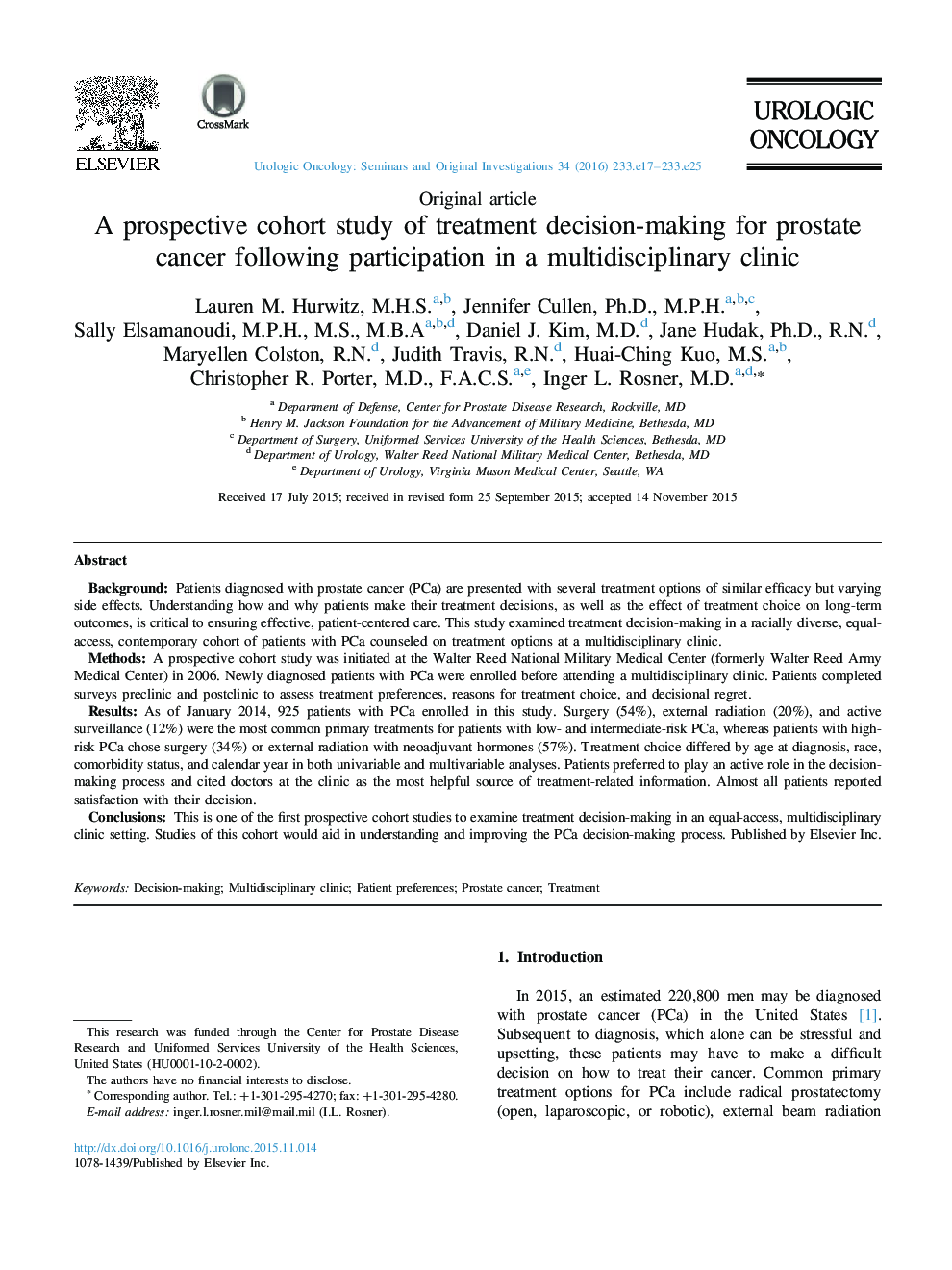| Article ID | Journal | Published Year | Pages | File Type |
|---|---|---|---|---|
| 6193932 | Urologic Oncology: Seminars and Original Investigations | 2016 | 9 Pages |
•Patients with PCa were followed prospectively to assess treatment decision-making.•All attended a multidisciplinary clinic and had equal access to health care.•Primary treatment choice differed by age, race, comorbidity status, and year.•The multidisciplinary clinic helped patients make their decisions.•Patients were highly satisfied with their decisions.
BackgroundPatients diagnosed with prostate cancer (PCa) are presented with several treatment options of similar efficacy but varying side effects. Understanding how and why patients make their treatment decisions, as well as the effect of treatment choice on long-term outcomes, is critical to ensuring effective, patient-centered care. This study examined treatment decision-making in a racially diverse, equal-access, contemporary cohort of patients with PCa counseled on treatment options at a multidisciplinary clinic.MethodsA prospective cohort study was initiated at the Walter Reed National Military Medical Center (formerly Walter Reed Army Medical Center) in 2006. Newly diagnosed patients with PCa were enrolled before attending a multidisciplinary clinic. Patients completed surveys preclinic and postclinic to assess treatment preferences, reasons for treatment choice, and decisional regret.ResultsAs of January 2014, 925 patients with PCa enrolled in this study. Surgery (54%), external radiation (20%), and active surveillance (12%) were the most common primary treatments for patients with low- and intermediate-risk PCa, whereas patients with high-risk PCa chose surgery (34%) or external radiation with neoadjuvant hormones (57%). Treatment choice differed by age at diagnosis, race, comorbidity status, and calendar year in both univariable and multivariable analyses. Patients preferred to play an active role in the decision-making process and cited doctors at the clinic as the most helpful source of treatment-related information. Almost all patients reported satisfaction with their decision.ConclusionsThis is one of the first prospective cohort studies to examine treatment decision-making in an equal-access, multidisciplinary clinic setting. Studies of this cohort would aid in understanding and improving the PCa decision-making process.
